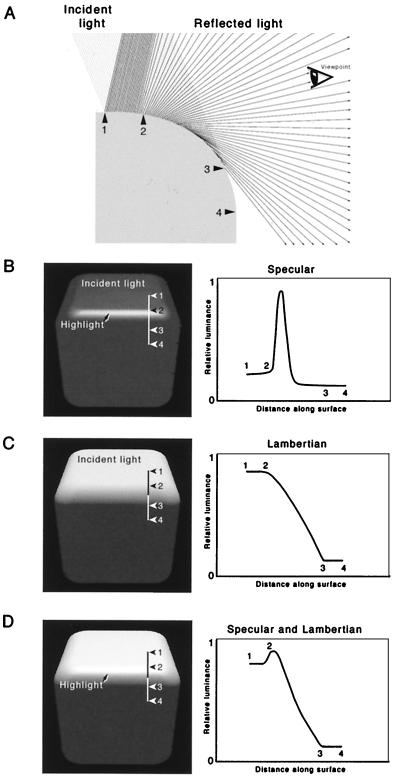Figure 5.
The generation of highlights by the specular properties of surfaces. (A) Diagram indicating that when a curved surface has specular as well as Lambertian properties, a highlight will be seen because, for any eye position (indicated by the icon), there is a point on the curved surface that reflects light to the eye at the incident angle. (As in previous figures, numbers indicate corresponding surface points in the subsequent panels). (B) Luminance profile for a specular surface seen from the viewpoint in A, determined for the rendered cube shown in Fig. 4. (C) Luminance profile for a Lambertian surface, as in Fig. 4, seen from the viewpoint in A. (D) The luminance profile derived by combining the curves in B and C. Because most natural surfaces have both specular and Lambertian properties, the luminance gradients generated by curved surfaces are typically adorned by a view-dependent highlight at the onset of the gradient from the better lit to the shadowed surface.

